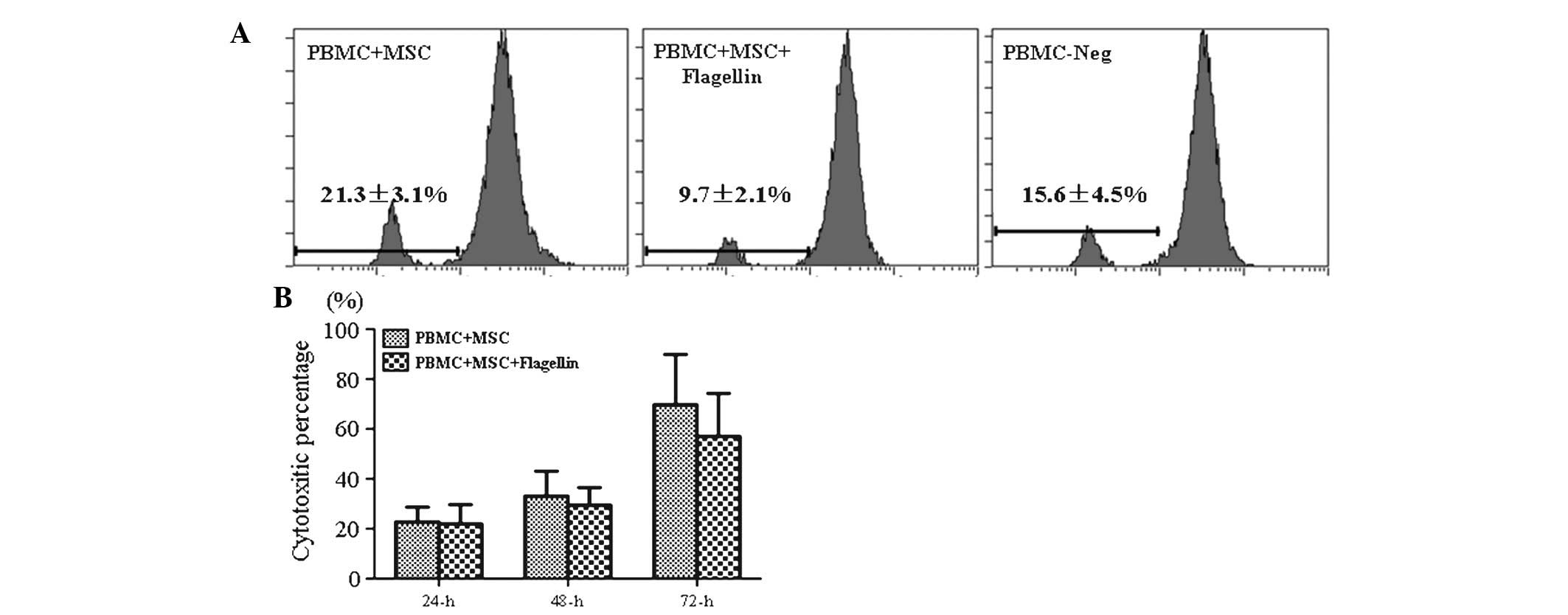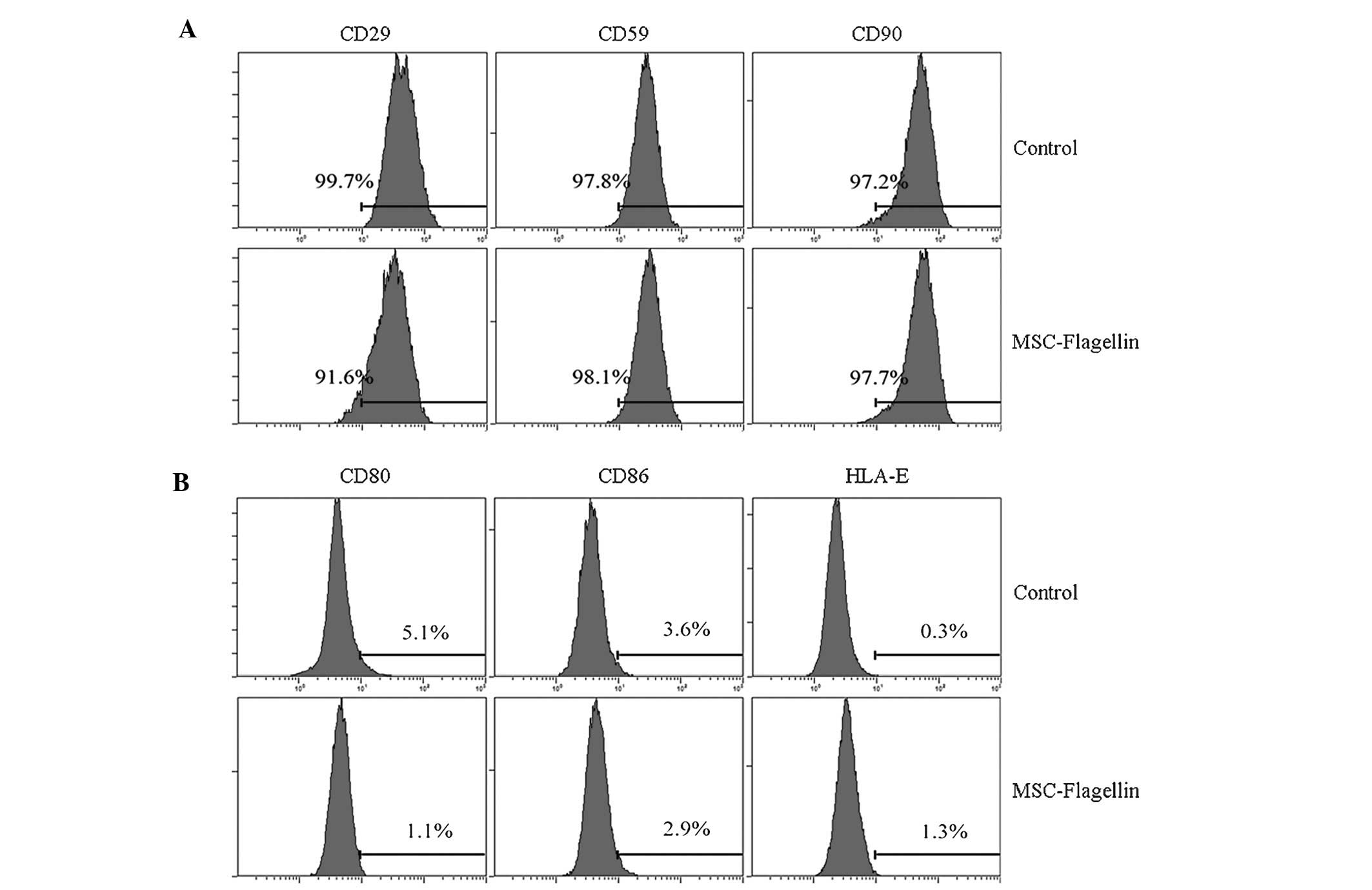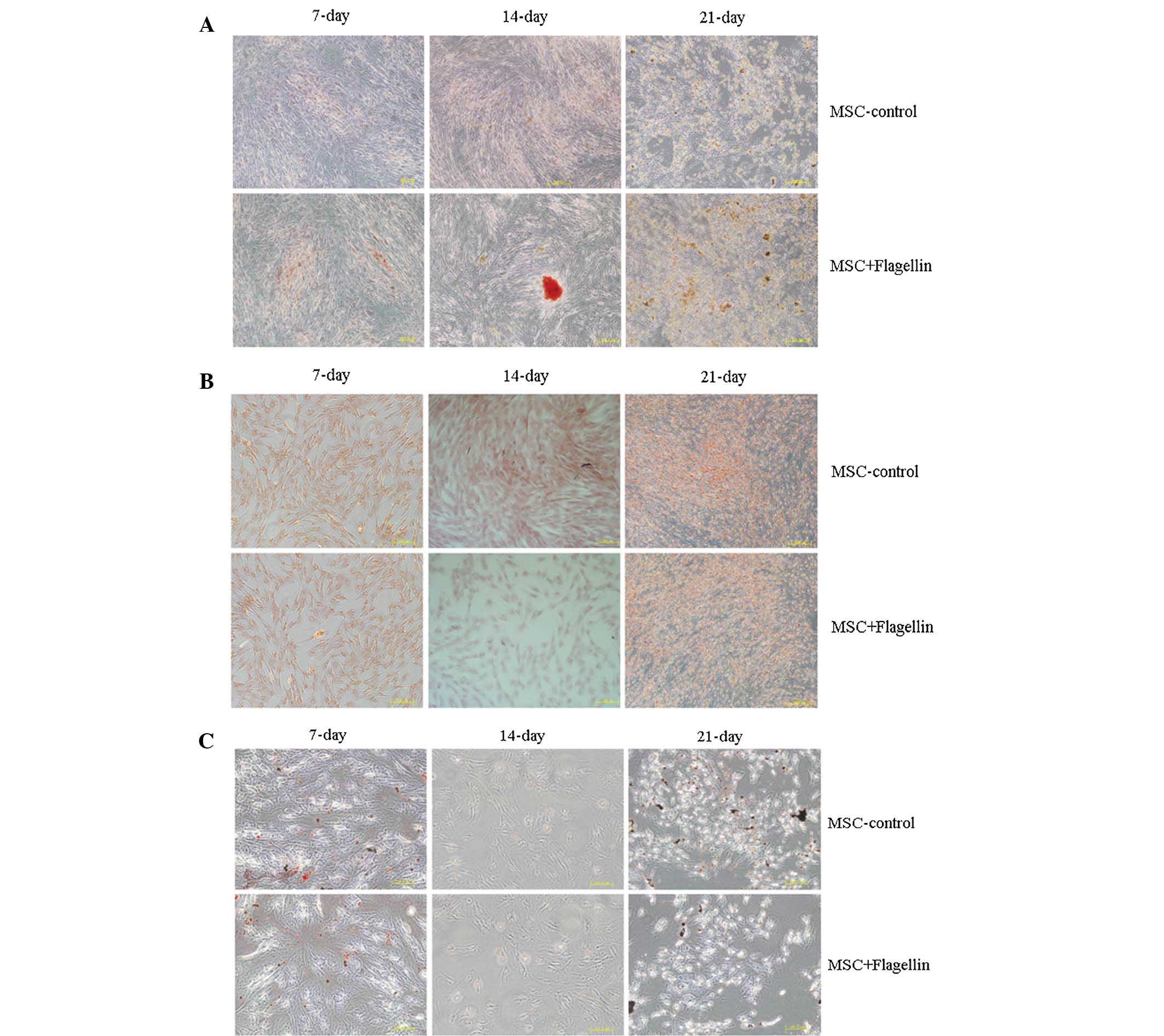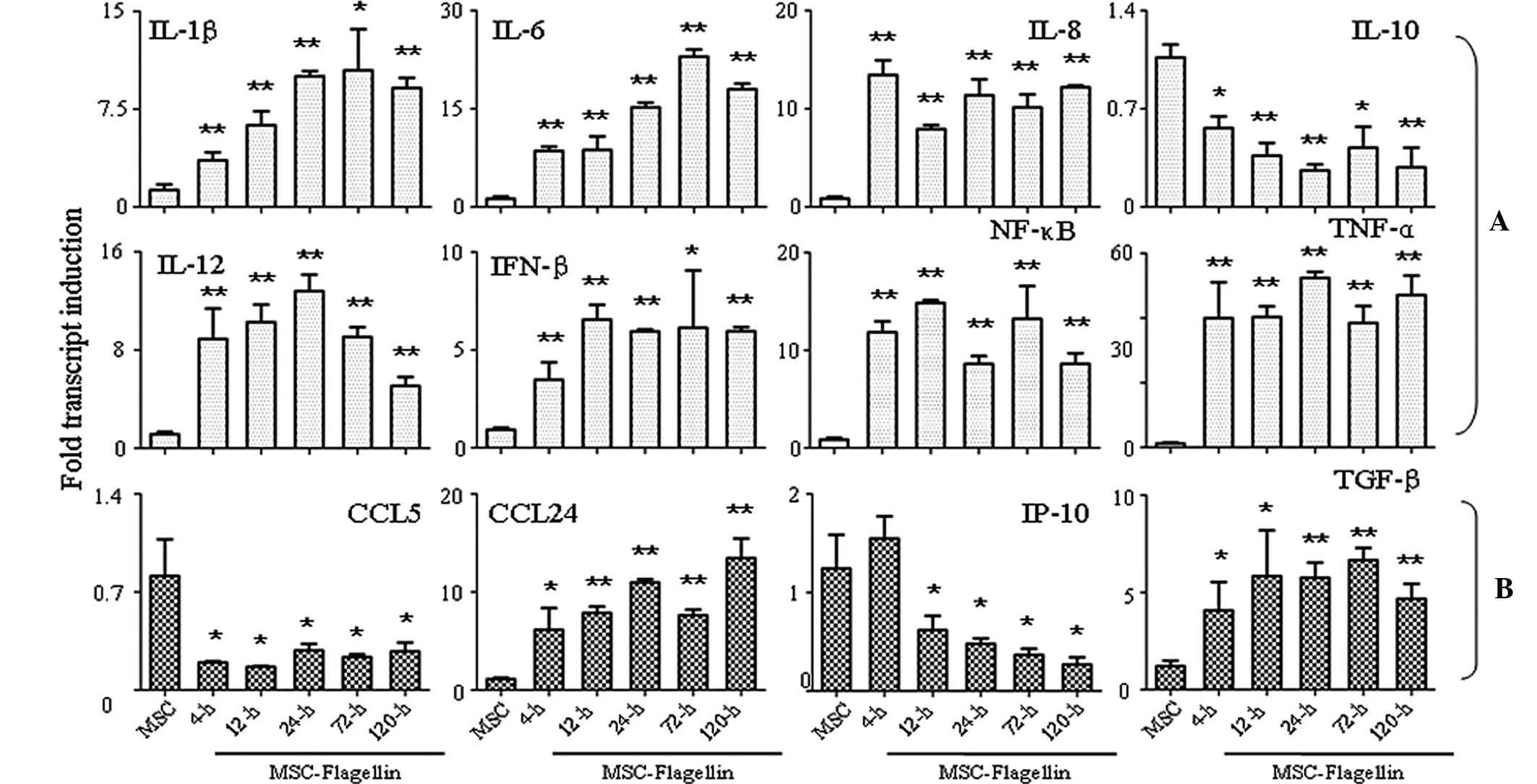Flagellin influences the expression of a variety of important cytokines and chemokines without affecting the immune status of umbilical cord mesenchymal stem cells
- Authors:
- Published online on: September 1, 2015 https://doi.org/10.3892/mmr.2015.4276
- Pages: 6955-6961
Metrics: Total
Views: 0 (Spandidos Publications: | PMC Statistics: )
Total PDF Downloads: 0 (Spandidos Publications: | PMC Statistics: )
Abstract
Multipotent differentiation ability, low expression of co‑stimulatory molecules and immunosuppressive effects render mesenchymal stem cells (MSCs) the best candidate for use in cell‑based therapy. At present, MSCs are widely used in clinical trials, which have, however, failed to demonstrate any long‑term therapeutic benefits of MSCs. Therefore, to improve the therapeutic potential of MSCs, it is important to understand the underlying mechanisms of the rapid disappearance of MSCs after transplantation. Toll‑like receptors (TLRs) have important roles in the induction of the immune response and the regulation of biological functions. The present study employed TLR5 agonist flagellin in order to assess whether the activation of the TLR5 pathway alters the immune status and influences the differentiation ability of MSCs isolated from umbilical cords (UC). Assessment of the proliferation of peripheral blood mononuclear cells co‑cultured with UCMSCs as well as their lactate dehydrogenase release indicated that flagellin stimulation failed to increase the immunogenicity of UCMSCs. Flow cytometric and histological cell differentiation analyses also confirmed that TLR5 activation neither enhanced the expression of co‑stimulatory molecules (CD80, CD86 and human leukocyte antigen‑E), nor influenced the differentiation ability of UCMSCs. However, polymerase chain reaction analysis indicated the induction of pro‑inflammatory molecules by flagellin, which suggested that the induced immune‑associated molecules may mediate biological functions of UCMSCs other than those assessed by the present study. Future studies should focus on the role of TLR5 in regulating other functions of UCMSCs.













